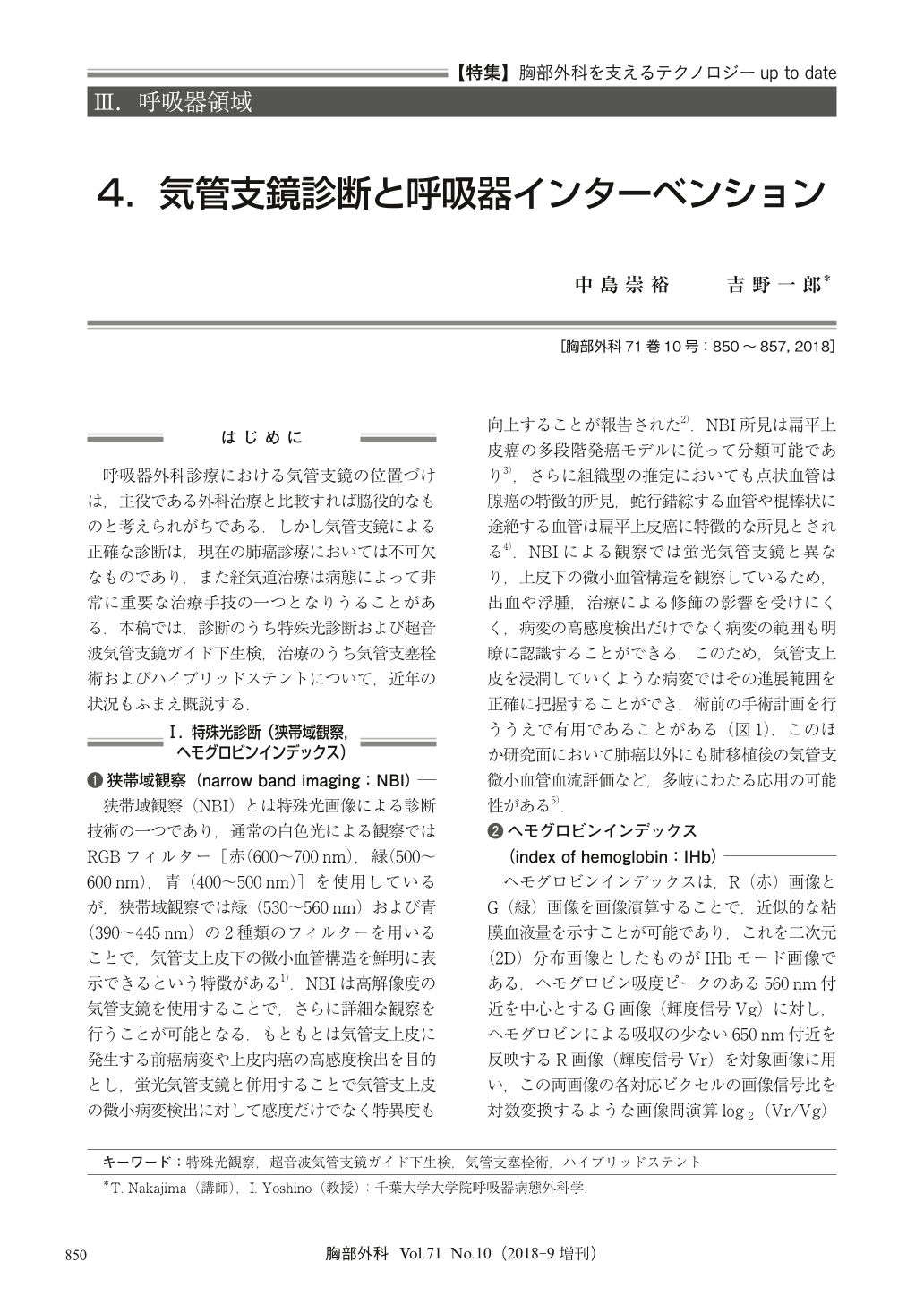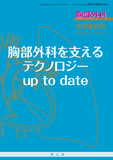Japanese
English
- 有料閲覧
- Abstract 文献概要
- 1ページ目 Look Inside
- 参考文献 Reference
呼吸器外科診療における気管支鏡の位置づけは,主役である外科治療と比較すれば脇役的なものと考えられがちである.しかし気管支鏡による正確な診断は,現在の肺癌診療においては不可欠なものであり,また経気道治療は病態によって非常に重要な治療手技の一つとなりうることがある.本稿では,診断のうち特殊光診断および超音波気管支鏡ガイド下生検,治療のうち気管支塞栓術およびハイブリッドステントについて,近年の状況もふまえ概説する.
Recent advance in bronchology and interventional pulmonology contributes to improve the quality of patient care in thoracic surgery. Narrow band imaging (NBI) combined with high definition bronchoscopy clearly visualize the aberrant tumor vessels on the mucosa of endobronchial malignancy. It helps the preoperative surgical planning for the clear bronchial margin during the surgery. The index of hemoglobin (IHb) show the approximate amount of hemoglobin within the mucosal surface and we use the IHb for the evaluation of local circulation of bronchial anastomosis after bronchoplasty. Endobronchial ultrasound-guided transbronchial needle aspiration (EBUS-TBNA) is now the best 1st test for the mediastinal staging in patients with lung cancer. The enough anatomical knowledge and adequate training of EBUS-TBNA is important to achieve high diagnostic yield with safety. Endobronchial occlusion therapy using endobronchial Watanabe spigot (EWS) is a novel therapeutic approach for the patients with persistent air leakage and bronchial fistula. We use the EWS for the empyema cases with pleural fistula in combination with negative pressure wound therapy. In addition, EWS can be applicable for the refractory broncho-gastric tube fistula in patients with esophageal cancer. The hybrid stent which was fully covered metallic stent is approved in Japan in 2014. This novel stent provide the more chance of stent insertion not only for the patients with airway stenosis but also for the broncho-esophageal fistula.

© Nankodo Co., Ltd., 2018


